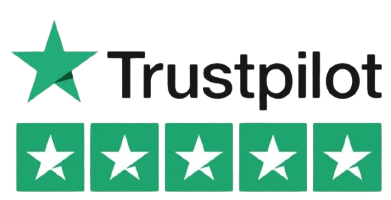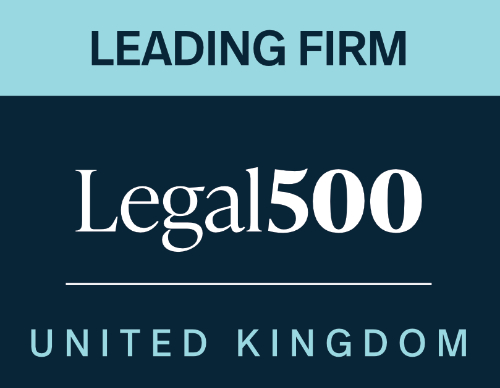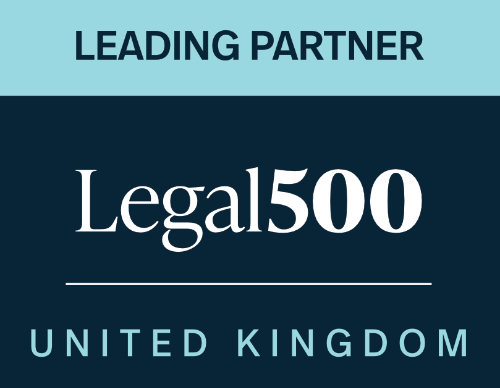Section A: What is the Tier 2 Sponsor List?
A sponsor licence is the permission needed for UK organisations to hire foreign national workers under specific visa categories, such as the Skilled Worker visa (formerly the Tier 2 Visa).
The Home Office maintains the list of sponsors to identify all employers that have the required permission to employ sponsored workers under routes such as the Skilled Worker visa, Health and Care Worker visa and other temporary work visas.
The list is regularly updated to reflect the current status of sponsors, with employers being added or removed based on application approval and compliance with the rules. The Tier 2 Sponsor List is an official record of employers who have been granted a licence to sponsor non-UK nationals under the Skilled Worker route. It’s grown substantially in recent years, and now includes over 120,000 employers.
To be eligible to hire skilled workers from abroad, UK employers must apply for and be granted a sponsor licence, a process involving rigorous checks to ensure that the employer is genuine, capable of fulfilling sponsorship duties, and committed to maintaining compliance with UK immigration laws.
Once approved for a sponsor licence, these employers are added to the Tier 2 Sponsor List, allowing them to issue Certificates of Sponsorship to prospective employees from outside the UK. The Certificate of Sponsorship confirms that the job offered meets the required skill level and salary thresholds set by the UK government and is a mandatory requirement for Skilled Worker visa applicants.
1. Benefits for Employers
For employers, being on the Tier 2 Sponsor List grants them the ability to access a global talent pool, which is often essential for filling specialised roles that cannot be met by the domestic workforce. This is particularly important in sectors such as healthcare, engineering, and information technology, where there is a high demand for skilled professionals.
2. Benefits for Workers
For employees, the Tier 2 Sponsor List acts as a gateway to working in the UK under the Skilled Worker visa. Only employers listed as licensed sponsors can offer the necessary sponsorship required to apply for this visa. Therefore, for skilled workers aiming to relocate to the UK, identifying and applying to companies on the Tier 2 Sponsor List is the first step in securing employment and obtaining the appropriate visa.
Being employed by a Tier 2 sponsor provides workers with a level of security, as these employers are subject to strict regulations and regular audits by the UK Home Office. This oversight helps ensure that employees are treated fairly and that their rights under UK employment law are protected.
DavidsonMorris Strategic Insight
The sponsor list is the most up to date, public record of which organisations in the UK have been granted permission to sponsor visa workers. The information on the list is however quite basic: sponsor’s name, location, licence type and current rating (A or B). It doesn’t reflect if there have been serious compliance issues, such as licence suspension or revocation status, and it also gives no indication of whether the organisations are actively recruiting or sponsoring workers.
Section B: How Workers Can Use the Tier 2 Sponsor List
The Register of Licenced Sponsors is an extremely helpful tool for workers looking to find visa sponsorship in the UK, whether to come to Britain under a sponsored work route or to remain here as a sponsored worker by changing employer.
1. Information on the Tier 2 Sponsor List
The Tier 2 Sponsor List provides essential information that can be highly useful for job seekers aiming to secure employment in the UK under the Skilled Worker visa. The list includes key details as follows:
a. Organisation Name
This column lists the names of all employers who are licensed to sponsor foreign workers. Job seekers can use this to identify potential employers who are authorised to offer sponsorship for the Skilled Worker visa.
b. Town/City
The location of the organisation’s primary office is provided here. For those who have a preference for working in a specific area of the UK, this allows for targeted job searching based on location.
c. County
This further refines the geographic information, helping job seekers narrow down employers within a broader region or within specific counties.
d. Type & Rating
This section indicates the type of organisation (e.g., company, charity) and its rating. A-rated sponsors have met all requirements, whereas B-rated sponsors may be under additional scrutiny. Job seekers should consider focusing on A-rated sponsors for greater stability and security.
When a company’s sponsorship licence is approved, they are issued an A-rated sponsor licence. They are then permitted to issue Certificates of Sponsorship and hire eligible migrant workers.
The sponsorship rating can, however, be downgraded to a B-rating as a penalty if the Home Office finds the company has breached its sponsor licence compliance duties.
B-rated companies are not permitted to issue new Certificates of Sponsorship until they are upgraded back to an A-rating by the Home Office. Upgrades are only given where the company can show they have corrected and improved the issues which resulted in the downgrade.
As such, you will not be able to take up new employment and sponsorship by a company with a B-rated licence – unless and until they can achieve an upgrade back to the A-rating.
| Feature | A-Rated Sponsor | B-Rated Sponsor |
| Licence status | Meets all Home Office compliance requirements | Licence downgraded after compliance concerns |
| Ability to issue new Certificates of Sponsorship (CoS) | Can assign new CoS to eligible workers | Cannot assign new CoS until upgraded to A-rating |
| Recruitment impact | Can hire new sponsored workers immediately | Restricted from hiring new sponsored workers |
| Action plan requirement | Not required | Must follow a Home Office-approved action plan to regain A-rating |
| Reputation | Viewed as fully compliant and reliable by workers and the Home Office | Signals compliance concerns to potential recruits and may deter applicants |
e. Route
The route column indicates the visa categories the organisation is licensed to sponsor under, such as the Skilled Worker or Global Business Mobility routes. Applicants should check this to ensure the job and sponsor permission aligns with their visa eligibility.
Sponsor Licence Type | Visa Categories Covered |
|---|---|
Worker Sponsor Licence | Skilled Worker Visa Senior or Specialist Worker Visa (GBM) Minister of Religion Visa Sportsperson Visa |
Temporary Worker Sponsor Licence | Creative Worker Visa Charity Worker Visa Religious Worker Visa Government Authorised Exchange Visa International Agreement Visa Seasonal Worker Visa Scale Up Worker visa Graduate Trainee Visa (GBM) UK Expansion Worker Visa (GBM) Service Supplier Visa (GBM) Secondment Worker Visa (GBM) |
2. How to Use the Tier 2 Sponsor List to Find a Sponsor
Before you can apply for a sponsorship visa for the UK, you first have to be sponsored by a qualifying UK employer. You can use the Tier 2 Sponsor List as follows to help research and identify potential UK employers:
Step 1: Access the Official Tier 2 Sponsor List
Start by visiting the official UK government website, where the most up-to-date Tier 2 Sponsor List is published. The list is typically available as a downloadable Excel or CSV file.
Step 2: Download the List
Download the latest version of the Tier 2 Sponsor List to your computer. This file contains a comprehensive list of all approved employers, including their names, license numbers, and the type of visa they can sponsor.
Step 3: Filter the List by Industry or Job Sector
Open the downloaded file and use filtering tools (usually available in Excel) to narrow down the list to employers in your specific industry or job sector. This helps focus your search on organisations that are more likely to have job openings relevant to your skills.
Step 4: Search by Location
If you have a preferred city or region in the UK where you want to work, you can further filter the list by location. This is especially useful if you want to live in a particular area due to personal preferences or local opportunities.
Step 5: Research Potential Employers
Once you have a filtered list of potential employers, start researching each company. Visit their websites, review their job postings, and look for any current vacancies that match your skill set. This will help you identify companies actively hiring and assess their suitability for your career goals.
Step 6: Prepare and Tailor Your Job Application
When applying for jobs with these companies, ensure your CV and cover letter are tailored to the specific role and emphasise your eligibility for a Skilled Worker visa. Mentioning that you are aware of their status as a Tier 2 sponsor can demonstrate your understanding of the process and increase your chances of being considered.
Step 7: Apply Directly or Contact HR Departments
Apply directly through the company’s website or job portals. If no suitable openings are listed, consider reaching out to the company’s HR department to inquire about potential opportunities. Emphasise your skills and willingness to relocate, and ask if they can keep your application on file for future openings.
Step 8: Monitor for Updates
The Tier 2 Sponsor List is periodically updated, so it’s important to check back regularly or subscribe to updates to stay informed about any new employers added to the list or changes in the sponsorship status of existing employers.
DavidsonMorris Strategic Insight
If you’re using the list to help find a sponsor, remember that it isn’t a job board. It’s a list of employers who could sponsor you, but who may not be actively recruiting or in the market to sponsor anyone.
That said, it is a useful tool to verify the licence status of a specific employer if, say, you’ve been offered a role and want to check the employer’s credentials. But if your situation is more speculative, you’re going to need to adopt a methodical approach to help your research efforts and work through the 120,000+ entries. That also means being clear on what the information on the list is telling you. As an example – a B-rating will usually mean the employer isn’t actually allowed to sponsor new workers. The organisation will need an active A-rating and current recruitment.
Section C: How to Get a Sponsored Visa in the UK
To secure a Skilled Worker visa, finding a sponsor is only part of the process. You will also need to meet the relevant visa criteria and follow the correct application steps.
The Skilled Worker visa requires the applicant to meet strict eligibility criteria in relation to areas such as skill and salary level. If you are applying as a Skilled Worker, in most cases the role has to be in an eligible occupation, usually at skill level RQ6 or above, and pay at least the relevant minimum salary and be listed. Certain RQF 3–5 jobs remain eligible for sponsorship under transitional provisions, but only if listed on the Immigration Salary List or Temporary Shortage List or under certain transitional allowances.
The most effective way to secure a Skilled Worker visa is to work closely with your prospective employer through the application process, particularly if they already hire sponsored workers and have processes and resources in place to support you through the Home Office visa application.
Most applicants will also need to show they meet the English language requirement through one of the following:
a. As a citizen of a majority English-speaking country
b. Hold a degree which is equivalent to a UK Bachelor’s degree or higher, which was taught or researched in English.
c. Have passed a Secure English Language Test (SELT) at the required level or above under the Common European Framework of Reference for Languages (CEFR).
d. Have previously met the English Language requirement during a grant of leave in the UK
Where maintenance funds are required as part of the visa application, most sponsors will guarantee their prospective employees’ maintenance for the first month of employment in the UK on the Certificate of Sponsorship. Only A-rated companies on the sponsor list are permitted to do this. Without a sponsor guarantee, the applicant must evidence access to their own funds.
| Stage | What Happens | Key Considerations |
| 1. Job offer from sponsor | Employer on the Tier 2 Sponsor List offers you a qualifying role | Check sponsor’s rating is A-rated and the role meets Skilled Worker eligibility |
| 2. Certificate of Sponsorship issued | Employer assigns an electronic CoS with job and salary details | Ensure CoS is accurate; errors can cause visa refusal |
| 3. Gather supporting documents | Collect documents such as passport, proof of English, and financial evidence if required | Some documents may need translations or UK ENIC verification |
| 4. Submit visa application | Apply online, pay the application fee and Immigration Health Surcharge | Application must match CoS details exactly |
| 5. Biometrics appointment | Attend a visa application centre to provide fingerprints and photograph | Delays here can impact overall processing time |
| 6. Home Office decision | Home Office assesses application against immigration rules | Decision times vary; errors or missing evidence can cause refusal |
| 7. Travel and start work | Arrive in the UK and start your role with the sponsoring employer | Must start work within the timeframe stated on your visa |
If you are eligible under the Skilled Worker requirements, your sponsor can assign you a Certificate of Sponsorship. You then use this unique reference number to make your visa application. Note that CoS are non-transferable, either between candidates or employers.
DavidsonMorris Strategic Insight
Securing a job offer is an important milestone, but it doesn’t guarantee the visa. You’ll need to work closely with the employer through the visa application process to make sure all of the eligibility and sponsorship requirements are met. In practical terms, this means getting your supporting documents together in the right format and without delay, and being responsive to any queries or information requests from the employer or the Home Office. As an example – a B-rating will usually mean the employer isn’t actually allowed to sponsor new workers. The organisation will need an active A rating and current recruitment.
Section D: How to Find a Job with a Tier 2 Sponsor
There are several steps to follow to find a job with a Tier 2 sponsor in the UK:
1. Identify Potential Employers
Start by downloading the latest Tier 2 Sponsor List from the UK government website. Filter the list to focus on companies in your industry or preferred location. Research these employers to learn about their business, company culture, and any current job openings.
2. Tailor Your Job Search
Focus your job search on roles that align closely with your skills and experience. Since only certain roles qualify for sponsorship under the Skilled Worker visa, it’s essential to target positions that meet the skill and salary thresholds set by the UK government.
3. Prepare a Strong CV and Cover Letter
Your CV and cover letter should be tailored to the specific job and employer. Highlight your skills, qualifications, and experience that match the job description. Make it clear that you are aware of the employer’s status as a Tier 2 sponsor and that you are eligible for sponsorship.
4. Emphasise Your Eligibility for Sponsorship
In your cover letter or CV, mention your eligibility for the Skilled Worker visa and that you have researched the employer’s status as a licensed sponsor. This shows that you understand the process and are a serious candidate. For example, you might say, “I am eligible for the Skilled Worker visa, and I understand that [Company Name] is a licensed Tier 2 sponsor.”
5. Leverage Your Global Experience
If you have international work experience or education, make sure to highlight this in your application. UK employers value candidates who bring diverse perspectives and skills, particularly in industries that rely on global talent.
6. Apply Through the Right Channels
Whenever possible, apply directly through the company’s careers page or reputable job portals. Avoid sending unsolicited applications unless the company explicitly states that they accept them. Always follow the application instructions provided in the job posting.
7. Prepare for the Visa Sponsorship Process
Be ready to discuss the visa sponsorship process during interviews. Employers will likely ask about your current visa status and your understanding of the Skilled Worker visa requirements. Demonstrating that you are informed and proactive about the process can boost your chances of being hired.
8. Be Persistent and Patient
The application process can be competitive, especially with employers that regularly sponsor visas. Be persistent in your job search, and don’t get discouraged by initial rejections. Keep refining your applications based on feedback and continue to apply to multiple opportunities.
DavidsonMorris Strategic Insight
Being on the list does not in itself mean an organisation is actively hiring. It just means that the organisation has a sponsor licence, with no indication of their level of recruitment activity. If you are looking to approach sponsors on a speculative basis, you’ll want to prove that you’re sponsorship-worthy and Skilled Worker-eligible from the outset.
Section E: Benefits of Working for a Tier 2 Sponsor
Working for a Tier 2 sponsor in the UK offers numerous advantages for foreign national workers. These benefits go beyond simply securing a job; they provide stability, opportunities for career growth, and a clear path to long-term residency.
The advantages of working for a Tier 2 sponsor include:
1. Visa Security and Lawful Employment
One of the most significant benefits of working for a Tier 2 sponsor is the security it provides in terms of visa status. When an employer sponsors your Skilled Worker visa, it means they have met the UK government’s stringent requirements to hire international workers legally. This sponsorship not only allows you to work legally in the UK but also provides peace of mind, knowing that your visa is backed by a reputable organisation.
The Skilled Worker visa can be granted for up to 5 years at a time and may be extended. After 5 years of continuous lawful residence, you may be eligible for Indefinite Leave to Remain (ILR).
2. Pathway to Permanent Residency (Indefinite Leave to Remain)
Working for a Tier 2 sponsor can also pave the way to permanent residency in the UK. After five years of continuous employment under the Skilled Worker visa, you may be eligible to apply for Indefinite Leave to Remain, which grants you the right to live and work in the UK indefinitely without the need for further visa sponsorship.
Achieving indefinite leave to remain is a significant milestone as it not only provides greater job flexibility (allowing you to switch employers without affecting your residency status) but also brings you closer to full citizenship if that is your long-term goal.
3. Access to Comprehensive Employee Benefits
Many Tier 2 sponsors, particularly those in sectors like finance, healthcare, technology, and engineering, offer comprehensive benefits packages to their employees. These benefits can include health insurance, pension schemes, paid holidays, and other perks that contribute to a higher quality of life while living in the UK.
Some employers offer relocation assistance programmes, which could include support with the administrative aspects of the move, language training or cultural orientation.
4. Stability and Legal Protections
Working for a Tier 2 sponsor ensures that you are employed in an environment that complies with UK employment laws and standards. This means you are entitled to the same legal protections as any other worker in the UK, including fair wages, safe working conditions, and the right to appeal in cases of unfair treatment.
The UK government closely monitors Tier 2 sponsors to ensure they meet their obligations, which includes protecting the rights of their sponsored employees. This oversight provides an additional layer of security, ensuring that your employer is held accountable for maintaining ethical and legal employment practices.
5. Opportunities for Dependants
Another key benefit of the Skilled Worker visa is the ability to bring dependants with you to the UK. They will need to be eligible for a dependant visa, and if their application is successful, would be permitted to live, work or study in the UK. Their period of stay will align with yours as the main visa holder. Dependants can also apply for settlement after five years in the UK, providing your entire family with the opportunity to establish long-term roots in the UK.
6. Networking and Professional Growth
Being part of a Tier 2 sponsor organisation often provides access to professional networks, industry events, and training opportunities that can significantly boost your career. Whether through formal mentorship programs, conferences, or collaborative projects, you’ll have the chance to connect with industry leaders and peers, enhancing your professional growth and expanding your career horizons.
DavidsonMorris Strategic Insight
If you have a sponsored work visa, your permission to stay will be dependent on your sponsored role and on your sponsor retaining its status. The compliance framework, and the obligations it places on sponsors, should give their sponsored workers a sense of job and immigration security. But where issues do arise, like a sponsor licence revocation, the impact on sponsored workers can be devastating. If you face these circumstances, take advice immediately on what the situation means for you and your visa.
Section F: How Employers Can Get on the Tier 2 Sponsor List
Becoming a Tier 2 sponsor (now called the Skilled Worker visa route) is a mandatory requirement for most UK employers looking to hire skilled foreign nationals.
While an employer can start the recruitment process for a role without being on the Tier 2 sponsor list, they will need to apply for a sponsor licence and be listed on the Register of Sponsors before they can issue the Certificate of Sponsorship to a migrant worker.
1. Sponsor Licence Eligibility Criteria for Employers
To become a sponsor licence holder and to feature on the Tier 2 List of Sponsors, UK employers must meet the stringent eligibility criteria set by the UK Home Office, which include:
Criteria | Description | Evidence Required | Compliance Checks |
|---|---|---|---|
Genuine Business Requirement | Employer must be legally established and operational in the UK | Registration certificates, trading address | On-site visits, audits |
Financial Stability | Employer must demonstrate financial capability to support workers | Financial statements, bank records | Regular financial checks |
Genuine Vacancy Requirement | The job must be a genuine vacancy meeting skill and salary thresholds | Job description, offer letter | Role evaluation |
Key Personnel Appointment | Employer must appoint an Authorizing Officer and other key roles | ID documents, role descriptions | Personnel background checks |
a. Genuine Business Requirement
The employer must be a legally established business or organisation operating in the UK. This includes being registered with the appropriate regulatory bodies, such as Companies House, and having a UK trading address.
b. Capability to Manage Sponsorship Duties
Employers must demonstrate that they have the necessary systems and processes in place to manage sponsorship responsibilities effectively. This includes keeping accurate records of sponsored employees, reporting certain events to the Home Office, and ensuring compliance with UK immigration laws.
c. Genuine Vacancy Requirement
The role for which the employer is seeking to hire a foreign worker must be a genuine vacancy. This means that the job must meet the skill level and salary requirements set by the UK government, and there must be a legitimate need for the position within the organisation.
d. Financial Stability
Employers must be financially stable and capable of supporting their sponsored employees. This may involve providing evidence of financial statements, tax records, and other documentation that proves the business’s ability to operate sustainably.
e. No History of Non-Compliance
Employers must have a clean history concerning immigration compliance. Any previous breaches of immigration law, such as hiring illegal workers or failing to comply with sponsorship duties, could lead to the rejection of the sponsorship application.
f. Appoint Key Personnel
Employers must appoint certain key personnel to manage the sponsorship process, including:
Role | Responsibilities | Required Skills | Importance |
|---|---|---|---|
Authorising Officer | Overall responsibility for the company’s compliance with sponsorship duties | Senior management experience, compliance knowledge | Critical for legal compliance |
Key Contact | Main point of contact with the UK Home Office | Communication skills, understanding of immigration processes | Ensures smooth communication with authorities |
Level 1 User | Day-to-day management of the Sponsorship Management System (SMS) | IT proficiency, attention to detail | Essential for accurate record-keeping and reporting |
i. Authorising Officer: A senior and competent person responsible for the actions of staff and representatives who use the sponsorship management system (SMS).
ii. Key Contact: The person who will act as the main point of contact with the UK Home Office.
iii. Level 1 User: The person responsible for the day-to-day management of the sponsorship process using the SMS.
2. Sponsor Licence Application Process
The sponsor licence application process involves rigorous checks to ensure that the employer is genuine, capable of fulfilling sponsorship duties and committed to maintaining compliance with UK immigration laws.
Step Number | Description | Required Documents | Estimated Timeframe |
|---|---|---|---|
1 | Secure a job offer from a licensed sponsor | Job offer letter, Certificate of Sponsorship | 1-2 months |
2 | Prepare required documents | Passport, proof of funds, English proficiency | 1-2 weeks |
3 | Apply online and pay the visa fee | Completed application form, payment receipt | 1-3 months |
4 | Attend a biometrics appointment | Biometric data (photo and fingerprints) | 1-2 weeks |
5 | Receive visa decision and travel to the UK | Visa approval notice | 3-8 weeks |
The application for a sponsorship licence is submitted online via the UK Home Office’s official website. During this process, employers need to provide detailed information about their business, the roles they intend to sponsor, and the systems they have in place to manage sponsorship duties effectively.
The sponsor licence application also requires employers to gather and prepare extensive documentation to support their application. This documentation typically includes proof of business registration, such as a Companies House registration certificate, financial documents like bank statements and audited accounts, details of the company’s organisational structure, and information about the key personnel who will be managing the sponsorship process.
Document Type | Description |
|---|---|
Proof of Business Registration | Evidence that the business is legally established in the UK, such as a Companies House registration certificate. |
Financial Documents | Documents showing the financial health of the business, such as bank statements, audited accounts, or annual reports. |
Details of Key Personnel | Information about the individuals responsible for managing the sponsorship licence, including their roles and responsibilities. |
Organisational Structure | A chart or document outlining the company’s structure, including management hierarchy and key departments. |
Office Location Proof | Evidence of the business’s trading address in the UK, such as a lease agreement or utility bills. |
HR Systems Evidence | Documentation demonstrating that the company has the necessary HR systems in place to manage sponsorship duties, such as record-keeping and right-to-work checks. |
Compliance and Record-Keeping Policies | Written policies that detail how the business will comply with sponsor duties and maintain accurate records. |
Proof of Genuine Employment Vacancy | Job descriptions and employment contracts that prove the role being sponsored is genuine and meets the required skill level. |
The licence application fee varies depending on the size and type of the organisation, with smaller or charitable organisations paying a lower fee than larger companies.
Following the completion of the online application, employers must submit the supporting documents within five working days, either electronically or by post, as per the instructions from the Home Office.
The Home Office will then conduct compliance checks to verify the information provided in the application. These checks may include an on-site visit to assess the business’s operations, its ability to comply with sponsorship duties, and the authenticity of the vacancy for which the employer seeks to hire.
Once the Home Office has reviewed the application and conducted any necessary checks, a decision will be made. If the application is successful, the employer will be granted a sponsorship licence and they can start to assign CoS via the SMS.
After being granted the licence, employers will gain access to the Sponsorship Management System, an online portal that allows them to manage their sponsored employees. Through the SMS, employers can assign Certificates of Sponsorship to foreign workers, report any changes in circumstances, and fulfil their ongoing sponsorship duties.
Sponsors also have to carry out a compliant Right to Work check before the worker starts employment, as is the case for all new-starters, not just sponsored workers.
DavidsonMorris Strategic Insight
The initial sponsor licence application sets the tone for the ongoing compliance standards and demands on employers. If you make it onto the Register of Licensed Employers, expect to be scrutinised by the Home Office (your SMS, HR systems, processes and records) at any stage while the licence is live. Falling short can lead to enforcement action, putting your sponsored workers’ visas at risk and exposing your organisation to operational disruption.
Section G: Summary
The Tier 2 Sponsor List, known officially as the Register of Licensed Sponsors, is an official register maintained by the UK Home Office of employers authorised to sponsor skilled workers from outside the UK.
For most employers, obtaining a sponsor licence is a mandatory pre-requisite to access global talent, but it comes with significant responsibilities. Employers must ensure they meet stringent eligibility criteria, maintain compliance with immigration laws, and manage their sponsorship duties effectively. Failure to adhere to these requirements can result in penalties, including the revocation of the sponsorship licence, which can disrupt business operations.
For job seekers, the Tier 2 Sponsor List is a valuable resource for identifying potential employers who can legally offer sponsorship for a visa. However, there are risks involved, such as the possibility of an employer losing their sponsorship licence, which could jeopardise the worker’s visa status. It is also important for job seekers to ensure that the roles they are applying for meet the required skill level and salary thresholds set by the UK government.
Section H: Need Assistance?
DavidsonMorris are UK immigration specialists. We work with UK employers to support their talent mobility needs, including hiring workers from overseas under all UK immigration routes. For advice on how to get your organisation on the Register of Licensed Sponsors, contact us.
Section I: Tier 2 Sponsor List FAQs
What is the Tier 2 Sponsor List?
The Tier 2 Sponsor List, officially known as the Register of Licensed Sponsors, is part of the Skilled Worker visa route. It is an official record maintained by the UK Home Office that includes employers who are licensed to sponsor skilled workers from outside the UK, enabling them to apply for the necessary visa to work in the country.
How can I find employers on the Tier 2 Sponsor List?
You can access the most up-to-date Tier 2 Sponsor List on the official UK government website. The list is typically available as a downloadable Excel or CSV file, which you can filter by industry, location, or employer name to find potential employers.
What types of jobs qualify for sponsorship under the Skilled Worker visa?
Under the July 2025 rules, a role can be sponsored under the Skilled Worker visa only if it is a genuine vacancy in one of the occupations listed in Appendix Skilled Occupations and normally at RQF Level 6 or above with a salary at or above the applicable threshold. The current general threshold for most applicants is the higher of £41,700) and 100 % of the occupation’s going rate. A limited number of RQF 3‑5 jobs can still be sponsored if they appear on the Temporary Shortage List or Immigration Salary List, or the worker is covered by transitional provisions, but these roles must still meet the list salary floor and full going rate.
How do I apply for a job with a Tier 2 sponsor?
Start by identifying employers from the Tier 2 Sponsor List who operate in your field. Tailor your CV and cover letter to the specific role, highlighting your skills and experience relevant to the job. Make sure to mention your eligibility for the Skilled Worker visa and apply directly through the employer’s website or reputable job portals.
What are the benefits of working for a Tier 2 sponsor?
Working for a Tier 2 sponsor provides visa security, access to comprehensive employee benefits, opportunities for career progression, and a pathway to permanent residency in the UK. Your dependants may also be eligible to live and work in the UK under your visa.
Can my spouse or children come with me if I work for a Tier 2 sponsor?
Under the Skilled Worker visa, your spouse or partner and children can apply as your dependants. This allows them to live, work, or study in the UK while employed by a Tier 2 sponsor.
How long is the Tier 2/Skilled Worker visa valid?
The Skilled Worker visa is typically valid for up to five years. After this period, you may be eligible to apply for Indefinite Leave to Remain (ILR), which allows you to live and work in the UK indefinitely without further visa sponsorship.
What happens if my Tier 2 sponsor loses their licence?
If your employer loses their sponsorship license, the UK Home Office will notify you, and your visa may be curtailed. You will usually be given 60 days to find another sponsor or leave the UK. It’s crucial to stay informed about your sponsor’s status and have a plan in place in case of such events.
How often is the Tier 2 Sponsor List updated?
The Tier 2 Sponsor List is updated regularly by the UK Home Office, typically on a monthly basis. Employers may be added or removed from the list depending on their compliance with the sponsorship requirements.
Can I switch jobs with a different Tier 2 sponsor?
You can switch jobs to another Tier 2 sponsor, but you will need to apply for a new Skilled Worker visa with the new employer as your sponsor. The new role must also meet the necessary criteria for visa sponsorship.
What is a Certificate of Sponsorship?
A Certificate of Sponsorship is an electronic document that your employer must issue to you as part of the visa application process. It contains your job details and confirms that the role meets the requirements for the Skilled Worker visa. You will need this certificate to apply for your visa.
What should I do if I’m unsure about the visa application process?
If you’re uncertain about any part of the visa application process, consider seeking advice from an immigration adviser. They can help ensure that you and your potential employer meet all the requirements, making the sponsorship and visa application process smoother.
Section J: Glossary
Term | Definition |
|---|---|
Tier 2 Sponsor List | An official list, now called the Register of Licensed Sponsors, maintained by the UK Home Office of employers who are licensed to sponsor skilled workers from outside the UK under the Skilled Worker visa. |
Skilled Worker Visa | A UK visa category that allows foreign nationals to work in the UK for an approved employer (Tier 2 sponsor) in a role that meets specific skill and salary criteria. |
Certificate of Sponsorship (CoS) | An electronic document issued by a licensed sponsor that confirms the job offer and role details, required for the Skilled Worker visa application. |
Indefinite Leave to Remain (ILR) | The status that allows an individual to live and work in the UK indefinitely without the need for a visa, typically after five years on a Skilled Worker visa. |
Sponsor Licence | A licence issued by the UK Home Office to employers, allowing them to sponsor foreign workers for skilled roles in the UK. |
Right to Work Check | A legal requirement for UK employers to verify that a worker has the legal right to work in the UK, including those on a Skilled Worker visa. |
UKVI (UK Visas and Immigration) | The division of the UK Home Office responsible for handling visa applications, immigration control, and managing the UK’s immigration services. |
UK ENIC (formerly NARIC) | The national agency responsible for providing information on the recognition and comparison of international qualifications with UK standards. |
Authorising Officer | The senior person within a company responsible for overseeing the management of its sponsorship licence and ensuring compliance with immigration rules. |
Sponsorship Management System (SMS) | An online portal used by licensed sponsors to manage their sponsored employees, including issuing Certificates of Sponsorship and reporting changes to the Home Office. |
Resident Labour Market Test (RLMT) | A former requirement (now abolished) where employers had to prove that no suitable settled worker could fill a role before offering it to a foreign national. |
UK Home Office | The government department responsible for immigration, security, and law and order, including managing the UK’s visa and immigration processes. |
Right to Work | The legal right of an individual to work in the UK, which can be established through UK nationality, settled status, or an appropriate visa. |
Section K: Additional Resources
| Resource | Description | Link |
|---|---|---|
| UK Government – Register of Licensed Sponsors (Workers) | This official UK government resource allows you to search for companies that hold a sponsor licence to hire foreign workers. It provides a downloadable list of licensed sponsors and their status. | https://www.gov.uk/government/publications/register-of-licensed-sponsors-workers |
| UK Visas and Immigration – Skilled Worker Visa | This page provides comprehensive guidance on the Skilled Worker visa, including eligibility criteria, application process, and employer sponsorship requirements. | https://www.gov.uk/skilled-worker-visa |
| UK Government – Sponsor a Visa Application | This guide explains how employers can sponsor foreign workers, how to apply for a sponsor licence, and the duties associated with holding a sponsor licence. | https://www.gov.uk/uk-visa-sponsorship-employers |
| UK Government – Right to Work Checks | This resource outlines how employers can conduct right to work checks to ensure foreign workers are legally able to work in the UK. | https://www.gov.uk/check-job-applicant-right-to-work |
| Home Office Sponsor Guidance | This set of official documents offers detailed guidance for employers holding a sponsor licence, including compliance duties and how to manage sponsored workers. | https://www.gov.uk/government/collections/sponsorship-information-for-employers-and-educators |
| UK Government – Global Business Mobility Visas | This resource covers the different visa routes under the Global Business Mobility category, including Senior or Specialist Workers, Graduate Trainees, and more. | https://www.gov.uk/global-business-mobility |












